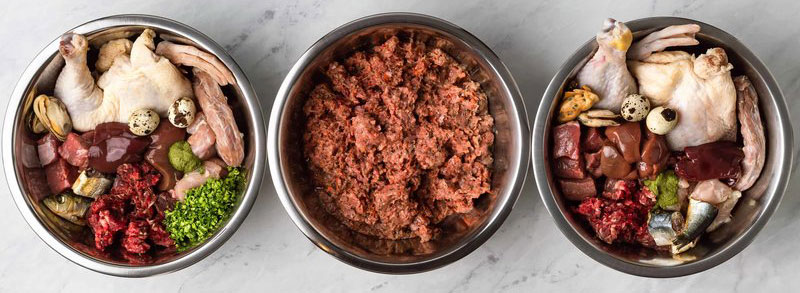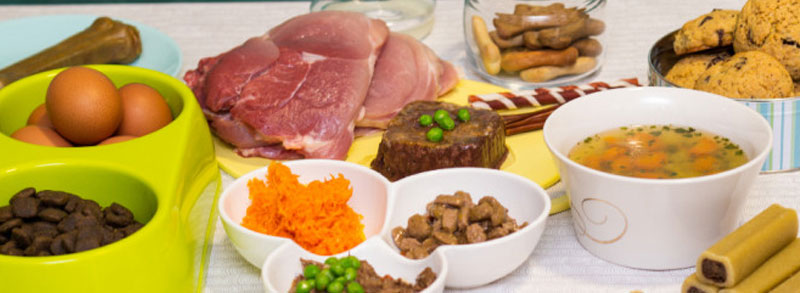0472 751 310
[email protected]
270 Findon Road Findon SA
Open hours
Mon – Fri: 10.00am – 5.30pm
Sat & Sun: 10.00am – 2.00pm
Public Holidays Closed
Shopping cart
We regularly get asked what ‘raw’ is about. Most pet owners traditionally feed their pets processed foods that are advertised as being of high nutritional value to a pet. But in reality, these products are heavily processed and are rarely as good as they advertise. That is why the FYPO range prides itself on being natural, healthy, and raw.

There isn’t a “one size fits all” approach to pet nutrition. Each pet is unique and may have unique needs. Though we often hear the debate between raw and cooked pet food, the real nutritional differences are between fresh food and processed food.
There’s no compelling reason to pick one approach over the other. Instead, the decision should be made on a case-by-case basis. The general rule that may be applied is that the less processing that is done to the food, the better. And for most dogs, that is no processing at all (i.e., raw).
Having said that, there are some dogs with sensitive digestive systems that don’t handle raw food very well, and find cooked food easier to break down. And other dogs with compromised immune systems (or who live with people with compromised immune systems) for whom the risk of illness from pathogens is real. And still, other dogs who just prefer their meals cooked, for whatever reason.
Different pets will prefer different proteins. Keep track of which ones your pet enjoys so you can make sure you are buying the right raw food. So when making a choice, don’t get too fixated on the issue of raw or cooked. If you’d feel more comfortable lightly cooking your pet’s meals, go right ahead. The important thing is to feed fresh food, whether raw or cooked and try to minimize the use of heavily processed kibble.
Transitioning a pet from dry to raw food isn’t as difficult as it seems. Here are our top tips.
Stop free feeding
If you’re used to feeding kibble, you’ve probably left it out all day long. When you transition to raw, it’s important to have set mealtimes, just like most humans have – breakfast, lunch, and dinner, or just breakfast and dinner. Give your pet 30 minutes or so to eat, then remove the food.
A safe and comfortable feeding place
Mealtime for your pet should be a happy, relaxed experience. In a multi-pet household, this may mean separate eating areas. Just as we wouldn’t be expected to share a plate at dinner, we shouldn’t expect our pets to either! Find a safe space for each pet to eat so they can enjoy their tasty meal without the threat of other pets invading.
Incorporate raw food first if your pet is used to kibble
If your pet has been eating exclusively dry food, you may want to transition them to raw food on a gradual basis. Some pets don’t like change, so the differences in smell, taste, and texture can be overwhelming. Mixing a raw protein food with their dry food before moving onto straight raw may be a good way to help your pet adjust to the new sensations. Start with 1/4 raw to 3/4 kibble, then after a week move to 1/2 and 1/2, and then 3/4 raw to 1/4 kibble, until you can finally transition all the way onto raw food.
How much should my pet eat a day?
One of the best ways to keep dogs healthy is to feed them the right amount of a high-quality food. Feeding your dog too much or not enough can have certain health consequences. Giving your dog the right amount of quality food can help support your pet’s overall health and keep them feeling their best.

First determine how active your dog is.
Activity levels can be described as follows:
We recommend feeding your dog their required daily amount, divided over 2 meals per day as this is better for their digestion (and helps to avoid bloat in larger breeds). Feeding twice can also prevent begging between meals.
The below table has some suggested amounts to feed your dog.
Note that you can switch between standard recipes and leaner recipes to suit your dog as you observe their bodies over time.

% of Weight per Days
5kg
10kg
15kg
20kg
25kg
30kg
35kg
40kg
2%
125g
250g
300g
400g
500g
600g
750g
1kg
3%
150g
300g
450g
600g
750g
900g
1kg
1.25kg
4%
200g
400g
600g
7005
1kg
1.25kg
1.4kg
1.6kg
5%
250g
500g
750g
1kg
1.25kg
1.5kg
1.75kg
2kg
Please note: These amounts are a guide only. You are the best judge of your dog’s condition, and no two dogs are the same. Different breeds and different aged dogs have varying metabolisms and activity levels. This guide does not take into account other food and treats you may be feeding. Puppies require a fattier diet and pregnant and lactating mothers need significantly larger amounts of food. Please do research and consult your vet if in doubt.
Our products are manufactured and packaged to the highest quality, standard and presentation. It is important to store your pets’ fresh food in a similar way to how we store our own. All fresh products must be refrigerated as soon as possible. Recommended Refrigeration Storage & Temperatures (CSIRO)

FOOD
REFRIDGERATOR (0 – 3°C)
FREEZER
Red Meat
3 – 5 Days
4 – 6 months
Minced Meat & Offal
2 – 3 Days
2 – 3 months
Poultry
2 – 3 Days
2 – 3 months
Seafood
2 – 3 Days
2 – 3 months
NATURAL, RAW, HEALTHY
FOOD FOR YOUR FUR FAMILY
We want you to share your furbaby photos and we’ll share ours

The very best natural, raw, healthy food for your furry best mates. Our food is made locally from ethically sourced Australian suppliers with no preservatives, additives or fillers. Only the best for our very important best friends. Our food is made with love, and we care ‘For Your Paws Only’.